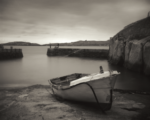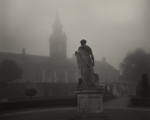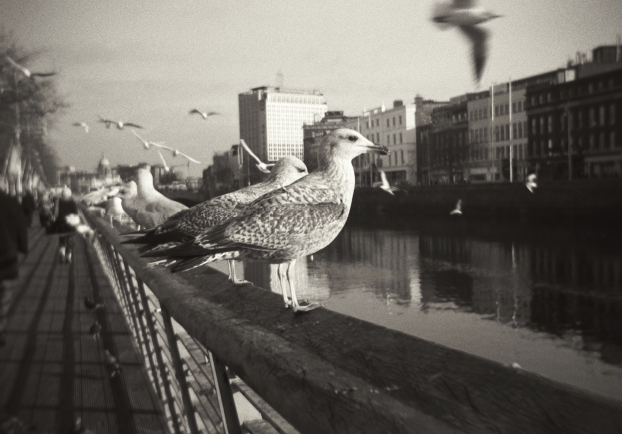With stunning black and white photography, Eddie Mallin’s photographic essay, Dublin, captures the character and spirit of Dublin’s cobbled streets, buildings, statues, canals, parks and coastline.

Dalkey
PJ Costello writes in the introduction to the book; “Mallin’s photographs allow us to pause, observe and contemplate our unique city/town.” It is a chance to look at these familiar streets through a new lens and appreciate the special blend of urban with expanses of seashore and parkland that makes Dublin so unique.
Eddie Mallin, a Dublin photographer specialising in traditional film-based photography, is deeply rooted in the analogue process and traditional darkroom processing techniques. These photographs, stripped back of high-definition colour, instead use classic photographic methods to capture how these places feel, creating a style of image that Mallin calls “soulful and moody.”

Kilmainham
The photographs were taken using both a high-quality Hasselblad camera and an unusual €20 Holga low-tech camera. The Holga, with its plastic low-quality lens, one shutter speed, one aperture and a “very dodgy” focusing system, produces negatives with lots of quirky details. The images it produces have some central sharpness, softly blurred edges, and dark vignetting in the corners. Mallin describes the Holga as creating images that “show how I felt and remembered scenes rather than realistically portraying them.” The Hasselblad captures a high-quality, very sharp image overall, which was used to take the nighttime images in the book and some of the landscapes, while the other scenes of Dublin were captured with the dreamy feel of the Holga.
These timeless photography techniques create a photographic journey through Dublin, through urban lanes lit by street lamps, past the water rushing in with the tide and into snow-covered peaceful parks. If you want to experience more of these beautiful images you can get your own copy of Dublin by clicking here.

